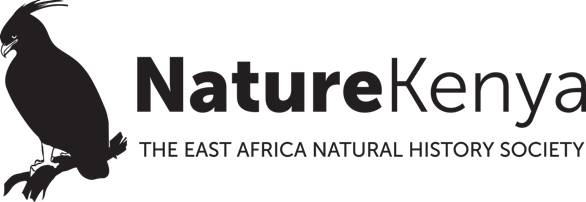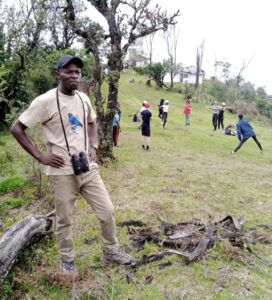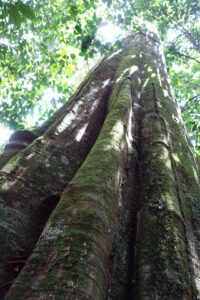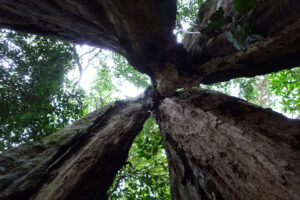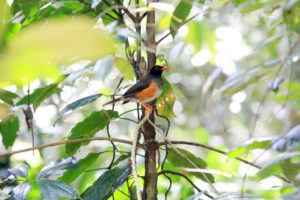Grasses are the most familiar plants, but few people recognise just how much they are both diverse and interesting. There are close to 700 species of grasses described from Kenya, and about 1,000 species in East Africa. Worldwide there are over 12,000 species and all grasses are part of a single plant family, the Poaceae. Humans, livestock and wildlife all benefit from grasses, most significantly from the food they provide.
Waxbills, and other birds in the Estrilidae family, including including firefinches, pytilias and cordon-bleus, along with seedeaters feed mostly on grass seeds. While the seeds of grasses are typically rather tiny, they are an extremely rich source of food that is available in abundance when conditions are right. Other birds like guineafowl, francolins, and even the giant, majestic Ostrich will consume grass seeds when they are seasonally available.
While I was working on the guide ‘Grasses of East Africa’, I spent a lot of time watching birds and other creatures interacting with grasses. One such occasion was on a visit to the Cynometra-Manilkara habitat of Arabuko-Sokoke Forest on Kenya’s north coast. It was one of those wonderful moments, following good rains, where carpets of grass had covered the sandy red soil. As the rains had been especially good, these grasses had flowered and set seeds.
From a distance, with some friends, I watched as a flock of Crested Guineafowl moved slowly through the grass. This was slightly puzzling, as typically these flighty fowl flee on being spotted! Creeping closer, we were able to see that they were completely focused on picking off the ripening grass seeds. With incredible dexterity, they moved along pulling off individual seeds with a deft peck-and-tug motion. They were so focused on their task that we were able to get really close and watch them at work. Even the appearance of a Sokoke bushy-tailed mongoose, that dashed across the road, only elicited a brief squawk of alarm before they returned to their feast.
Grasses also serve many different birds as an important source of material for building their nests. The weavers are the true artists at using grasses to create incredible works of art and shelter. I have had the pleasure of watching a number of different weaverbirds build their nests both out in the bush and around my house.
The Vitelline Masked Weaver makes its nest almost entirely out of the leaves and stems of grasses, including tall Guinea Grass (Panicum maximum). Despite their nest-building being a noisy chaotic affair, with males competing, stealing and sabotaging each other, they harvest and carefully weave grass together to form a neat, compact oval-shaped nest. Another species, the White-Browed Sparrow- Weavers use dry grasses to
build, dense, untidy nests. They are fond of nesting near people and their loud, scratchy calls are a part of life in many parts of Kenya.
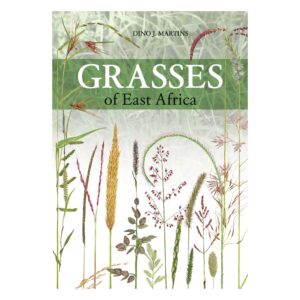
Insects too, live, feed and flourish within grasses, which in turn provide sustenance for a host of birds, reptiles, mammals and even other arthropods. Without the grasses, none of these creatures would be able to survive.
As everyone who has lived and travelled in East Africa can attest, just a couple days of rain can turn an entire landscape green. Where there was dust and despair previously, life bounces and erupts with abundance. This first flush of growth and life is mostly thanks to grasses, which are one of the most resilient groups of plants on our planet. They have the ability to grow quickly and produce new shoots, allowing for new growth after just a little rain.
For the past 30 years I’ve had the pleasure of studying and exploring this amazing group of plants. Grasses are not easily identified and, perhaps for this reason, they have been largely overlooked by even seasoned naturalists and ecologists. My hope in writing a general guide on grasses is to inspire people to pay them more attention, learn their natural history, and better understand their intricate connections with other species.
This article by Dino Martins was first published in the Kenya Birding magazine, issue 16.
